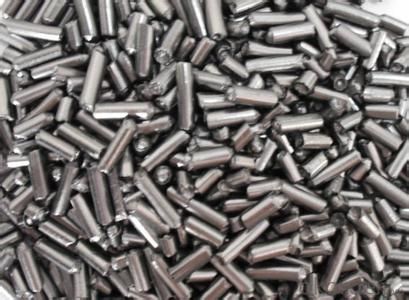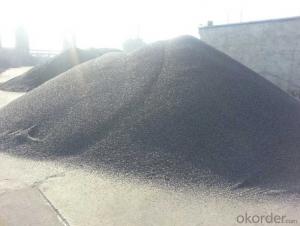Carburant Additives high absorb recarburizer carbon agent carbon raiser
- Loading Port:
- Dalian
- Payment Terms:
- TT OR LC
- Min Order Qty:
- 10 m.t
- Supply Capability:
- 500000 m.t/month
OKorder Service Pledge
Quality Product, Order Online Tracking, Timely Delivery
OKorder Financial Service
Credit Rating, Credit Services, Credit Purchasing
You Might Also Like
Specifications of recarburizer:
- Widely used in steel-making metallurgical
- Calorific:8000-8800caloric valua
- FC min 90 95%max
- Competely grain size
Product Description:
- Fixed carbon:90%-95%
- Sulphur:0.35% max
- Volatile matter:1.58%
- Ash:8% max
- Humidity:0.8%max
- Calorific valua:8000cal/kg min 8800cal/kg max
Packaging & Shipping:
- Waterproof toon bags(without small bag inside)
- 25kg paper bag on the pallet or in 1MT big bag
- As customer require

- Q: Process for producing carbon fiber board
- Carbon fiber forming process:1, pressing method. This method is put into the carbon fiber prepreg resin has the metal mold, the pressure of excess glue overflow, then high temperature curing, stripping the finished products come out, this method is the most suitable for production of auto parts.2, hand paste layer method. The impregnated carbon fiber sheets are cut or laminated, or so that the sides of the layer are brushed with resin and then pressed to form. This method can be used arbitrarily to select the direction, size and thickness of fibers and is widely used. Note that the shape of the layer is smaller than the shape of the mold, so that the fiber will not bend when it is pressed in the mold.3 、 vacuum bag hot pressing method. Laminated on the mold hill and covered with heat-resistant film, applying pressure from the soft pocket to the laminate and curing in hot pressing.4, winding forming method. The carbon fiber monofilament is wound on the carbon fiber shaft, and is especially suitable for making cylindrical and hollow containers.5, pultrusion. The carbon fiber is fully infiltrated, and the resin and air are removed by extrusion, then solidified in the furnace. The method is simple and suitable for preparing rod shaped and tubular parts.
- Q: How does carbon form?speed
- How is coal formed?Coal is known as black gold, the food industry, it is one of the main energy use of the human world since eighteenth Century. Although its important position has been replaced by oil, but in the future for a long period of time, due to the exhaustion of petroleum, inevitable decline, but because of the huge reserves of coal, and the rapid development of science and technology, the new technology of coal gasification is becoming more mature and widely used, coal will become one of the production and life of human beings in an irreplaceable energy.Coal is millions of years of plant leaves and roots, stacked on the ground with a layer of very thick black humus, due to changes in the earth's crust constantly buried underground, long isolated from the air and under high temperature and pressure, after a series of complex physical and chemical changes and other factors, the formation of black however, this fossil, is the coal forming process.The thickness of coal seam in a coal mine and the crust drop speed and accumulation amount of plant remains. The crust decreased rapidly, the plant remains piled thick, the coal seam is thick, on the other hand, the crust decline slowly, the accumulation of plant remains thin, the mine coal seam is thin. The tectonic movement of the crust to the original level of coal seam folds and faults occur, some underground coal seam buried deeper, and squeezed to the surface, even above the ground, more likely to be found. There are some relatively thin coal seam, and the area is not large, so there is no value related to the formation of coal mining, so far not find the update statement.
- Q: What should we do to reduce carbon emissions in our lives?
- Reducing the burning of fossil fuels is important, reducing the emission of motor vehicles, reducing private cars, reducing thermal power, and burning carbon emissions from coal-fired power plants
- Q: Want advanced reinforcement, but I do not know where the high furnace rock carbon, looking for someone to guide...
- Landlord Hello, there are 51 bags sold in the mall, send the hope to adopt, thank you!
- Q: How is carbon used in the production of plastics?
- Plastics heavily rely on carbon, an indispensable ingredient, for their manufacturing. These polymers consist of extensive chains formed by repeating units, known as monomers. These monomers, in turn, consist of smaller molecules. Carbon atoms constitute a vital element in these monomers, serving as the foundation for the polymer chain. To acquire carbon for plastic production, diverse petroleum products, like crude oil and natural gas, are sourced. These fossil fuels contain hydrocarbons, which are organic compounds comprised of carbon and hydrogen atoms. Through a refining process called cracking, hydrocarbons are broken down into smaller molecules, including ethylene and propylene, which serve as the basic building blocks for numerous plastic types. Once these monomers are acquired, they are polymerized, meaning they are chemically bonded together to create lengthy chains. Carbon atoms play a critical role in this procedure, as they connect to shape the backbone structure of the polymer chain. The specific arrangement and bonding of carbon atoms dictate the properties of the resulting plastic, including its strength, flexibility, and durability. It is worth noting that while carbon is crucial, not all plastics are exclusively composed of this element. Other elements, such as oxygen, nitrogen, and chlorine, may be present in the monomers or introduced during production to enhance specific properties or introduce desired functionalities. All in all, carbon serves as a fundamental element in plastic production. It establishes the backbone structure, enabling the versatility and wide array of applications of plastic materials across various industries.
- Q: How does carbon affect the ozone layer?
- The ozone layer is not directly affected by carbon. However, the depletion of the ozone layer can be indirectly contributed to by certain carbon compounds, such as chlorofluorocarbons (CFCs) and hydrochlorofluorocarbons (HCFCs). When these compounds break down due to sunlight, chlorine and bromine atoms are released into the atmosphere. Once in the atmosphere, chlorine and bromine atoms can destroy ozone molecules catalytically, resulting in a thinning of the ozone layer. When a chlorine or bromine atom encounters an ozone molecule, it reacts with and breaks it apart, forming a chlorine or bromine oxide molecule and a regular oxygen molecule. The chlorine or bromine oxide molecule can then react with another ozone molecule, continuing the cycle and depleting the ozone layer. Although carbon in itself does not directly contribute to ozone depletion, the production and release of carbon compounds like CFCs and HCFCs are a result of human activities. These compounds were extensively used in various industries, such as refrigeration, air conditioning, and aerosol propellants, until their harmful effects on the ozone layer were discovered. To address this issue, the Montreal Protocol, an international treaty signed in 1987, aimed to phase out the production and use of these ozone-depleting substances. However, reducing carbon emissions is essential in addressing another environmental concern – climate change. The atmosphere's high levels of carbon dioxide and other greenhouse gases trap heat, leading to global warming. This poses various threats to ecosystems and human societies. By transitioning to cleaner and more sustainable energy sources and implementing measures to reduce carbon emissions, we can effectively tackle both ozone depletion and climate change, thereby safeguarding the health of our planet.
- Q: What is the difference between soil organic matter and soil organic carbon?
- Organic matter is organic matter, but a large part of which is composed of carbon, but carbon content of different organic matter is different, the conversion coefficient is 1.724, most of the organic matter and organic carbon conversion of a mean value is the value.
- Q: How can carbon capture and storage help reduce greenhouse gas emissions?
- Carbon capture and storage (CCS) can help reduce greenhouse gas emissions by capturing carbon dioxide (CO2) emissions from power plants and industrial facilities before they are released into the atmosphere. This technology allows for the separation and capture of CO2, which can then be transported and stored underground in geological formations. By preventing these emissions from entering the atmosphere, CCS helps to mitigate climate change and reduce the overall concentration of greenhouse gases.
- Q: What is the carbon cycle?
- The carbon cycle refers to the process by which carbon is exchanged and recycled between the Earth's atmosphere, oceans, and land. It involves various natural processes such as photosynthesis, respiration, decomposition, and combustion, as well as human activities such as burning fossil fuels and deforestation. This cycle helps regulate the Earth's climate and is crucial for maintaining the balance of carbon dioxide in the atmosphere.
- Q: The victory of the lightning 3361 material is full of carbon fiber, and the 3363 is made of carbon fiber and resin, which is better??
- All carbon fiber is good because carbon fiber is better than resin when it comes to making rackets; resin is usually used to reduce racket costs;
Send your message to us
Carburant Additives high absorb recarburizer carbon agent carbon raiser
- Loading Port:
- Dalian
- Payment Terms:
- TT OR LC
- Min Order Qty:
- 10 m.t
- Supply Capability:
- 500000 m.t/month
OKorder Service Pledge
Quality Product, Order Online Tracking, Timely Delivery
OKorder Financial Service
Credit Rating, Credit Services, Credit Purchasing
Similar products
Hot products
Hot Searches
Related keywords






























